There’s more to do in Barcelona than you could possibly take on, even during a longer holiday. Make sure you make the best of it and maximize your experiences.
Observe the astonishing architectural sites like Sagrada Familia. Wander through the stunning parks, like Parc Güell. Spend family time in Barcelona Zoo. Check the latest fashion trends on Passeig de Gracia. And watch a movie in the open air in the moat of Castell de Montjuïc.
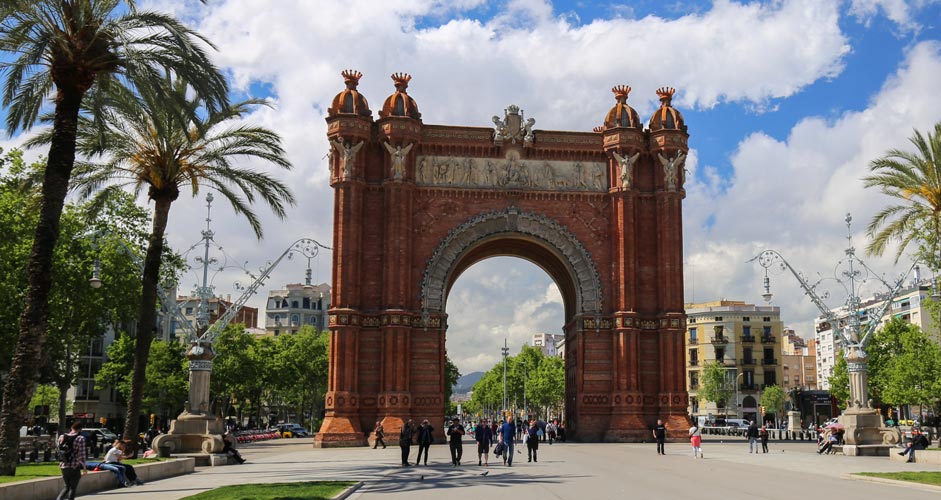
Must see attractions
There’s a reason why the following attractions are on the UNESCO's world heritage list. They aren't to be missed during your holiday. Barcelona has some of the most astonishing buildings in the world, and you’d probably regret not seeing them at least from the outside.
Sagrada familia (Unesco World Heritage Site)
The Basilica of the Sagrada Familia is a Barcelonian landmark that can’t be missed during your visit. The church is one of the most famous architectural legacies of Antoni Gaudí. The church was meant to represent Neo-Gothic style when the first bricks were laid in 1882.
The original architect resigned due to disagreements. Gaudí took over the project in 1883 and changed its style to what it is today. La Sagrada Familia is still a work in process. In 1936, during the Spanish Civil War, the original drawings of Gaudí were burned and the building process has been slow ever since.
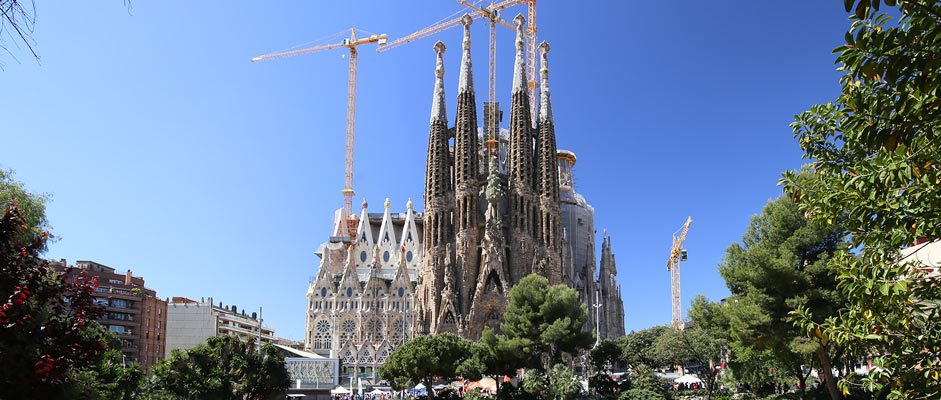
- Website: sagradafamilia.org
La Pedrera (Unesco World Heritage Site)
One of the two of Gaudí’s masterpieces on the street Passeig de Gracia, is Casa Milà, or more commonly known as La Pedrera (The Quarry), coming from its uneven grey stone facade. Gaudí designed the house for a local business man Pere Milá i Camps in 1905-1910.
A visit inside takes you from rooftop to courtyards, giving an understanding of Gaudí’s architecture through models, audiovisuals and objects.
The site is very popular in summer, and the queues fill up before the doors open. If you’re not keen on queueing and have an extra penny to spend, consider buying the Premium ticket to skip the queues.
- Website: lapedrera.com
Casa Batlló (Unesco World Heritage Site)
Another building on Passeig de Gracia street that sticks to your eye from a distance, is the modernistic Casa Battló, the home of a textile entrepreneur Josep Battló.
Antoni Gaudí renovated the building in 1905-1907 to its current look of bright colored mosaic, curvy line and arched rooftop to resemble the back of a dragon.
- Website: casabatllo.es
Hospital de Sant Pau (Unesco World Heritage Site)
Hospital de Sant Pau is without a doubt one of the most beautiful hospitals ever built. I recommend strolling the street Avinguda de Gaudí running diagonally between La Sagrada Familia and Hospital de Sant Pau. The hospital, designed by Luis Muntaner i Domenech, was built in 1905-1930 to replace the old Santa Pau hospital in Raval. Hospital Sant Pau doesn't work as hospital any more but as a museum and a gallery.
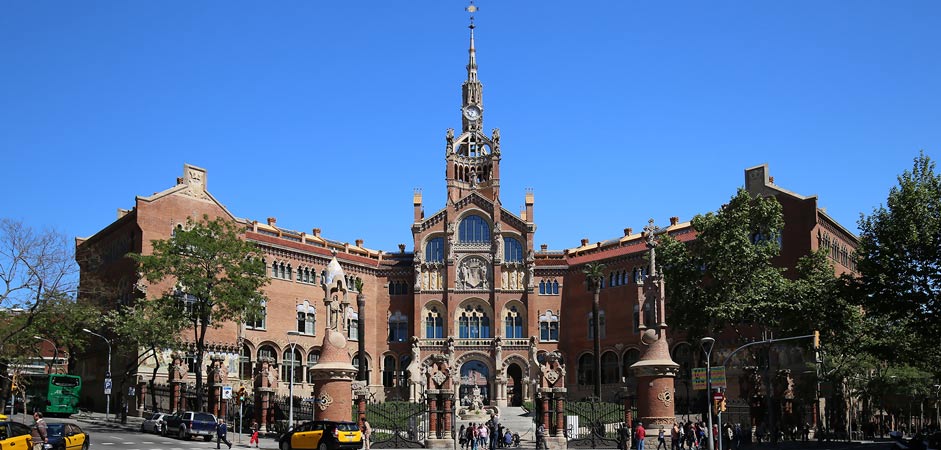
A stroll along the Avinguda de Gaudí from Sagrada Familia to Sant Pau hospital takes about 20 minutes, and it’s one of the most beautiful streets in the whole Barcelona.
- Website: santpaubarcelona.org
Things to do for families
There’s a multitude of activities for families in Barcelona. Here are a few memorable ideas, with children as the priority.
CosmoCaixa
One of the top recommendations for families is to visit CosmoCaixa science center. CosmoCaixa suits both, children and adults alike. Inside the massive building, you’ll find permanent and temporary exhibitions in 5 stories. Many activities allow interaction, which is especially entertaining for children. One of their highlights is the Flooded Forest, which recreates an Amazonian rain forest ecosystem over an area of 1,000 ㎡.
- Website: CosmoCaixa
Barcelona Zoo
Inside the Ciutadella park, you’ll find the Barcelona zoo, which has been there ever since 1888. There are over 400 species of animals in the zoo. Some of the personal highlights are the orangutans, gorillas, hippos, and dolphins.
The variety of animals is decent, but due to the small cages, the animals may seem lethargic. The food services inside are quite limited, consisting of hot dogs and other fast food, so it's better to eat before or after the visit. It takes roughly 3 hours to visit the zoo.
- Website: Barcelona Zoo
L’Aquarium (Barcelona Aquarium)
The Barcelona Aquarium has been one of the top sites to visit in Barcelona for almost 30 years. There are 450 species in the aquarium, being one of the largest aquariums in Europe. One of the curiosities of the aquarium, for an additional fee, is the Shark Experience, which takes you right to the sharks. If you have a diving license, you can swim in the shark tank with caretakers, and those who don’t, can still go under water but only secured inside a shark cage.
- Website: Barcelona Aquarium
Museu de la Xocolata
The Barcelona Chocolate Museum is not a tourist hook but a venue for truly well-crafted chocolate artwork. The museum, set up by the Confectioners’ Guild in 2000, guides you into the world of Chocolate making and exhibits various chocolate sculptures, such as Camp Nou stadium.
- Website: museuxocolata.cat
Parks in Barcelona
The parks in Barcelona aren't just vast areas of green grass, as they contain some of the finest art works of the city. These parks should be taken into consideration as a top priority when planning your itinerary.
Parc Güell
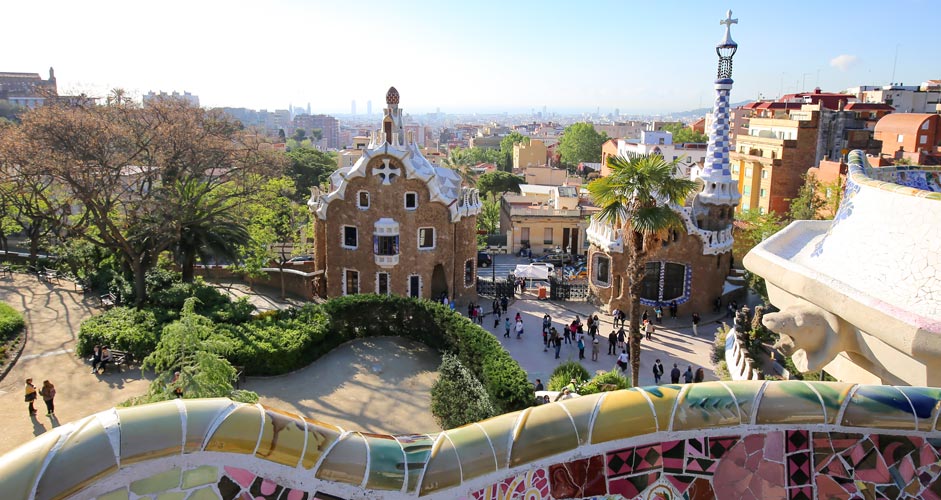
Parc Güell, designed by Antoni Gaudì, is located in Gràcia, in northern Barcelona. There is a Monumental Zone inside the park, where admission is required. The area around the Monumental zone is free, yet with very nice views as well.
If plan to reserve a ticket for a scheduled visit, do it well in advance. The number of visitors in the Monumental Zone is restricted, and there’s only a half-hour window for each ticket to get in.
The distance from Catalonia Square is only a little over 3 kilometers, so it’s reachable even on foot.
- Tickets and more information: parkguell.cat
Parc de la Ciutadella
Parc de la Ciutadella is a popular picnic place. It's located in Born, right next to the old town, on the eastern side of Sant Pere, Santa Caterina and Ribera.
The park is said to be the lungs of Barcelona. The magnificent fountain alone, in the north-east corner, is good enough of a reason to make a visit. Ciutadella also houses the Parliament of Catalonia and the Barcelona Zoo. If you're looking for a romantic place, the pond in the middle of the park is an ideal for the purpose. You can rent a rowing boat by the pond.
You don’t have to pay any admission to enter the park. If you wish to visit the Barcelona Zoo, they do collect an entrance fee.
Montjuïc
The large Montjuïc hill dominates the landscape of Barcelona in the south. Montjuïc offers stunning views over the city center and lots of activities. Many important museums are located on the hill, such as the Fundació Miró and the Museu Nacional d'Art de Catalunya-MNAC.
You’ll find the Olympic Stadium that played the key role in 1992 Olympic Games. Another impressive attraction to visit, is the castle - Castell de Montjuïc, which overlooks the whole hill and beyond Barcelona. In summer, Montjuic open air cinema shows films in a beautiful setting right next to the castle.
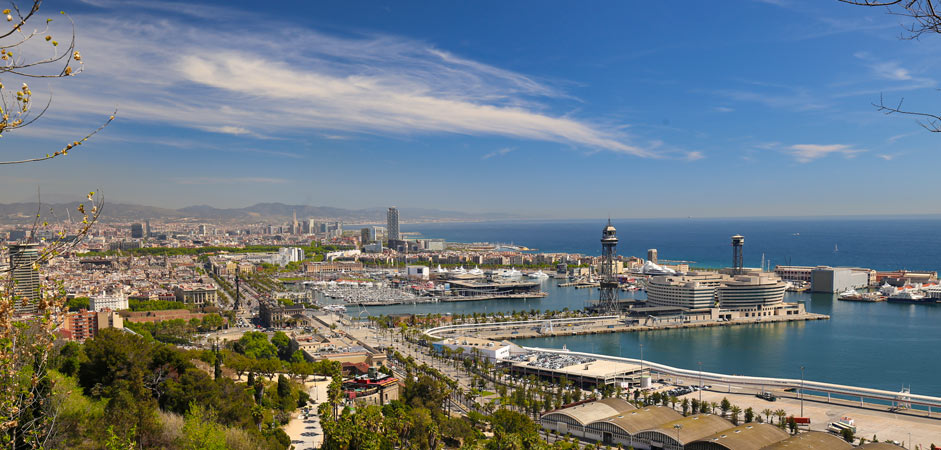
Tibidabo
The tall Tibidabo mountain rises on the northern horizon of the city center. On the top, there’s a small, simple theme park and the church, Temple Expiatori del Sagrat Cor. While the amusement park and the church aren’t that exciting, the view from Mount Tibidabo over Barcelona is as good as it gets.
Food walks - Things to do in Barcelona
There are quite a few nice options for combining food and sightseeing. If you like themed food walks but don't like paying any extra for guiding, find interesting ideas below.
Pintxo street (Carrer de Blai)
Pintxos are traditional slices of bread that come with different toppings, pinched to the bread by a cocktail stick. At a pintxo restaurant, you’ll be given a plate for picking your own mix of pintxos from the counter. Different pintxos may have different prices, and the price is marked somewhere near the pintxos.
When you’ve finished eating, you go to the bar with your plate and your waiter charges you according to the number of sticks on your plate. In some bars, you need to show the pintxos on your plate to a waiter before eating. In those cases, a waiter instructs you to act accordingly.
Calle Blai in Poble Sec is a long and narrow street, full of great pintxo bars, and the prices are cheaper than in the center. The area is popular among both, locals and tourists. Here, you can conveniently hop from one bar to another and taste pintxos.
- Address: Carrer de Blai (Poble Sec)
Chocolate street (Carrer de Petritxol)
The chocolate street of Barcelona is situated at the very heart of the old town. The narrow street is only 3 meters wide and 129 meters long. Carrer de Petritxol is famous among the locals, as the chocolatiers on this street have carried out the tradition for long, but it’s not much advertised in tourist guidebooks.
One of the most delicious ways to enjoy chocolate, is to have it with churros. Churros are donut bars, plain or sprinkled with sugar, enjoyed as they are or dipped in hot chocolate sauce. They are perfect on cold winter days to warm up your body.
- Address: Carrer de Petritxol (Gotic)
Palo Alto Market
The lively Palo Alto market is situated in an otherwise quiet part of Poblenou neighborhood. The market is a good choice, if you’re looking for an alternative way to spend a day in Barcelona. There are small stages of live bands, stalls of artisan products and lots of street food trucks of various cuisines.
- Website: paloaltomarket.com
Open-air cinemas
Open-air cinemas have become very popular in Barcelona in recent years, and there are plenty of venues on offer. Unfortunately, the season for open-air cinemas is quite short. They are open from late June to late July or early August. During this period, they run films several times each week. If it rains, the events are normally cancelled. You’ll get a refund, if you’ve bought a ticket in advance.
Open-air cinema Montjuic
Probably the most unique open-air cinema is situated next to the Montjuic castle. The screen is massive, and since you’re sitting in the moat of the castle, the sound is very clear. You can either sit on the grass or rent a lounger for 3 euros. If you choose to sit on the grass, you should bring along a towel or a blanket since the grass gets moist during the evening/night. You may bring your own drinks and food to enjoy the cinema experience to the fullest! They also sell snacks, beer, wine and soft drinks at the cinema. Most of the films are Hollywood films in the original language, so you don’t have to struggle with dubbing.
- Website: salamontjuic.org
Open-air cinema at the Barceloneta beach
A beach is another nice venue for an outdoor cinema. At the very central Barceloneta (Sant Sebastia beach), they show films on Thursdays and occasionally on Sundays, from late June to early August. Their film selection is less mainstream compared to Montjuic. The films are in their original language.
- Website: cinemalliure.com
Museums and galleries
It's worth including a visit to some of Barcelona's rich museum offerings in your schedule if time permits. Barcelona visitors with a tight budget are delighted to learn that certain museums don’t charge an entrance fee on certain dates and hours, mostly on Sundays. Check the website for closer information.
MNAC, Museum Nacional d’Art de Catalunya
The museum of Catalonian Art, next to Plaça d’Espanya, is a very beautiful building. You can also see it behind the magic fountain. The vast museum holds art works from Roman times to the 1950s.
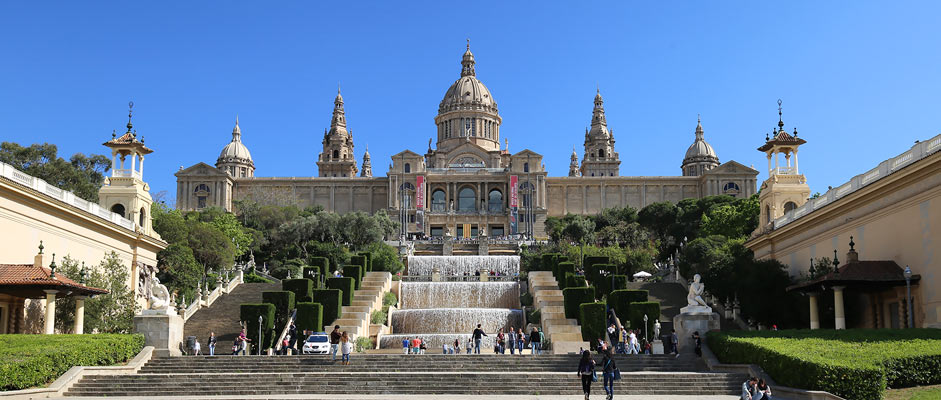
- Website: museunacional.cat
MUHBA, Museum d’Història de Barcelona
Barcelona history museum is spread to various locations with excavations from the Roman times. At the locations, you can witness streets, houses and pottery from the Roman times. True history fanatics shouldn’t miss this museum.
- Website: ajuntament.barcelona.cat
- Opening hours: Please check opening times here: ajuntament.barcelona.cat
Virreina Centre de la Imatge
If you appreciate photography, you might want to check out Virreina image center with interesting photo exhibitions taking place constantly. It’s located on La Rambla and the entrance is always free of charge.
- Website: ajuntament.barcelona.cat
Museu Picasso
The Picasso museum of Barcelona is one of the most popular sites to visit in Barcelona, especially on free admission days. The museum holds more than 3,800 works of art, and it’s especially renowned for Pablo Picasso’s paintings during his studying years.
- Website: museupicasso.bcn.cat
Centro de Cultura Contemporània de Barcelona (CCCB)
The contemporary museum of Barcelona in the upper Raval is a venue for temporary exhibitions, festivals, concerts, short films, speeches and much more. Traditionally, Worldpress photo exhibition is held in CCCB.
- Website: cccb.org
Museu Marítim de Barcelona
The area called Drassanes, meaning shipyards, is situated at the end of La Rambla street. The maritime museum of Barcelona is housed in the old Royal Shipyards building in the area. In the museum, you can learn about the long maritime traditions of Barcelona through artifacts dating to 13th century.
Tip: A special recommendation is the menu of the day served on weekdays at the museum restaurant.
- Website: www.mmb.cat
Jardí Botànic de Barcelona
The botanical garden of Barcelona is situated at the top of Montjuic hill. There, you’ll find a vast collection of plants ranging from Australia to South Africa.
- Website: museuciencies.cat
Museum Blau
Museum Blau is the city's own museum of natural history, and it’s located near Poblenou. In the museum, there are permanent and temporary exhibitions displayed over an area of 9000 square meters in two levels. It takes about 1-2 hours to go through the museum, so there’s no need to plan your whole day there. The museum contains many interactive items, making it more interesting for children.
- Website: museuciencies.cat
Moco - Museum of Modern Art
Moco is a modern and innovative art museum that opened in 2021. The museum focuses on modern and contemporary art, offering a collection of works by internationally renowned artists such as Banksy, Andy Warhol, and Jean-Michel Basquiat.
- Website: Moco
Banksy Museum
A museum located in the heart of Barcelona showcasing works by Banksy, the pioneering English street artist.
- Website: Banksy Museum
Photos: Jussi Ryynänen